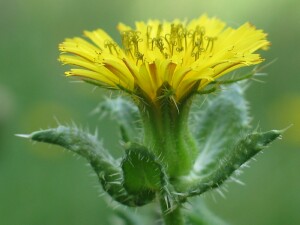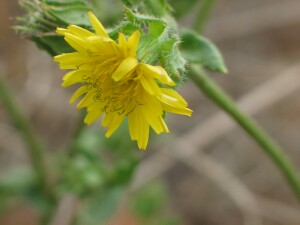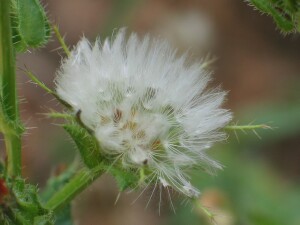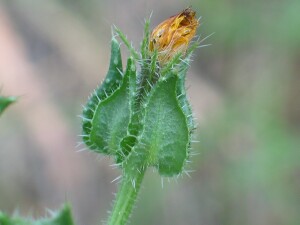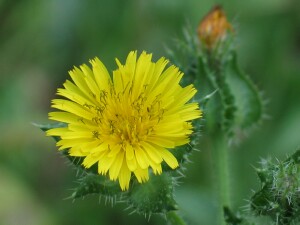Ox-tongue
Back | Salinity Indicator Plants Home | Common name home | Scientific name home | Photo Gallery | Glossary
| Ox-tongue photos | Family: Daisy (Asteraceae syn. Compositae) |
| Scientific Name: | Helminthotheca echioides | 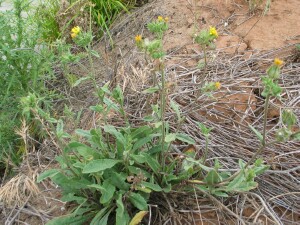 Ox-tongue plant Photo: A J Brown | |||||||||
Status: | Native to Europe, Asia and Africa. Naturalised throughout Australia except for the Northern Territory. | ||||||||||
Plant Description: | Annual to perennial herb, 30-100 cm tall with a basal rosette of elliptic to oblanceolate (spear-shaped with point attached to stem) leaves, 3.5-35 cm long and 1-10 cm wide and with wavy or toothed margins. Upper stem leaves ovate to lanceolate. All leaves covered in stiff tubercle-based (white or pale swellings) spine-like hairs. Flower-heads commonly in umbel-like (umbrella-like) clusters on 2-6 cm long stalks. Flower-cup (involucre) 5-22 mm long with ovate shaped outer bracts and long-pointed inner bracts; all with tubercle-based hairs. Flowers yellows which each ‘petal’ 12-17 mm long. Fruit a cypsela or achene (dry, indehiscent and one-seeded) with a pappus to aid wind dispersal. | ||||||||||
Habitat: | Widespread weed of disturbed ground, roadsides, gardens and wasteland. Often occurring on swamps and lakes margins and appears to have moderate salt tolerance, particularly where moisture is adequate and soils are heavy textured.
| ||||||||||
Comments: | Ox-tongue belongs to a group of mainly yellow-flowered daisies in the Tribe Lactuceae. The plants in this tribe are characterised by having a basal rosette of leaves (flat-weeds), milky sap in their stems and their flower-heads consisting entirely of ray florets (i.e. no ‘eye’ to the daisy). Ox-tongue is distinctive among these plants in its covering of stiff tubercle-based hairs. See Key to Yellow Daisy Flat-weeds. | ||||||||||
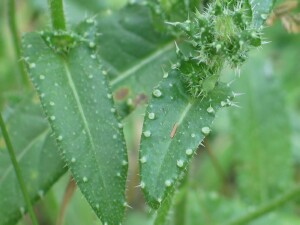 Leaves of Ox-tongue Photo: A J Brown | 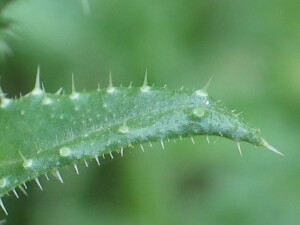 Ox-tongue leaf showing tubercles Photo: A J Brown |
|
|
|
|
|

